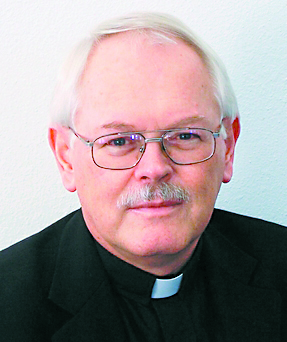IN EXILE
By Father Ron Rolheiser, OMI
After Jesus rose from the dead, his first appearances were to women. Why? One obvious reason might be that it was women who followed him to his death on Good Friday, while the men largely abandoned him. As well, it was women, not men, who set off for his tomb on Easter morning, hoping to anoint his dead body with spices – so it was women who were in the garden when he first appeared. But there is, I believe, a deeper and more symbolic reason. Women are the midwives. It is generally women who attend to new birth and women who are more paramount in initially nurturing new life in its infancy.
In any birth a midwife can be helpful. When a baby is born, normally the head pushes its way through the birth canal first, opening the way for the body to follow. A good midwife can be very helpful at this time, helping to ease that passage through the birth canal, helping ensure that the baby begins to breathe, and helping the mother to immediately begin to nurture that new life. A midwife can sometimes mean the difference between life and death, and she always makes the birth easier and healthier.

Jesus’ resurrection birthed new life into our world, and in its infancy that life had to be specially midwifed, both in its emergence and in the initial breaths it took in this world. The resurrection birthed many things, and these had to be midwifed; initially by the women to whom Jesus first appeared, then by the apostles who left us their eyewitness accounts of the risen Jesus, then by the early church, then by its martyrs, then by the lived faith of countless women and men through the centuries, and sometimes too by theologians and spiritual writers. We still need to midwife what was born in the resurrection.
And many things were born in that event – an event as radical as the original creation in what it gave birth to. The resurrection of Jesus was the “first day” a second time, the second time light separated from darkness. Indeed, the world measures time by the resurrection. We are in the year 2023 since it happened. (Christianity was born with that event. New time began then. But scholars calculated that Jesus was thirty-three years old when he died and so they added thirty-three years so as to begin new time with the date of his birth.)
Prominent within what the resurrection gives birth to and what needs still to be midwifed, is hope. The resurrection gives birth to hope. The women in the Gospels who first met the resurrected Jesus were the first to be given a true reason for hope and were the first to act as midwifes of that new birth. So too must we. We need to become midwives of hope. But what is hope and how is it given birth in the resurrection?
Genuine hope is never to be confused with either wishful thinking or temperamental optimism. Unlike hope, wishful thinking isn’t based on anything. It’s pure wishing. Optimism, for its part, takes its root either in a natural temperament (“I always see the bright side of things”) or on how good or bad the evening news looks on a given day. And we know how that can change from day to day. Hope has a different basis.
Here’s an example: Pierre Teilhard de Chardin, a deeply faith-filled scientist, was once challenged by an agnostic colleague after making a presentation within which he tried to show how the story of salvation history fits perfectly with the insights of science regarding the origins of the universe and the process of evolution. Teilhard went on to suggest, in line with Ephesians 1:3-10, that the end of the whole evolutionary process will be the union of all things in one great final harmony in Christ. An agnostic colleague challenged him to this effect: That’s a wonderfully optimistic little schema you propose. But suppose we blow up the world with an atomic bomb. What happens to your optimist schema then? Teilhard answered in words to this effect: If we blow up the world with an atomic bomb, that will be a set-back, perhaps for millions of years. But what I propose is going to happen, not because I wish it or because I am optimistic that it will happen. It will happen because God promised it – and in the resurrection God showed that God has the power to deliver on that promise.
What the women who first met the risen Jesus experienced was hope, the kind of hope that is based on God’s promise to vindicate good over evil and life over death, no matter the circumstance, no matter the obstacle, no matter how awful the news might look on a given day, no matter death itself, and no matter whether we are optimistic or pessimistic. They were the initial midwives helping to give birth to that hope. That task is now ours.
(Oblate Father Ron Rolheiser is a theologian, teacher and award-winning author. He can be contacted through his website www.ronrolheiser.com.)
